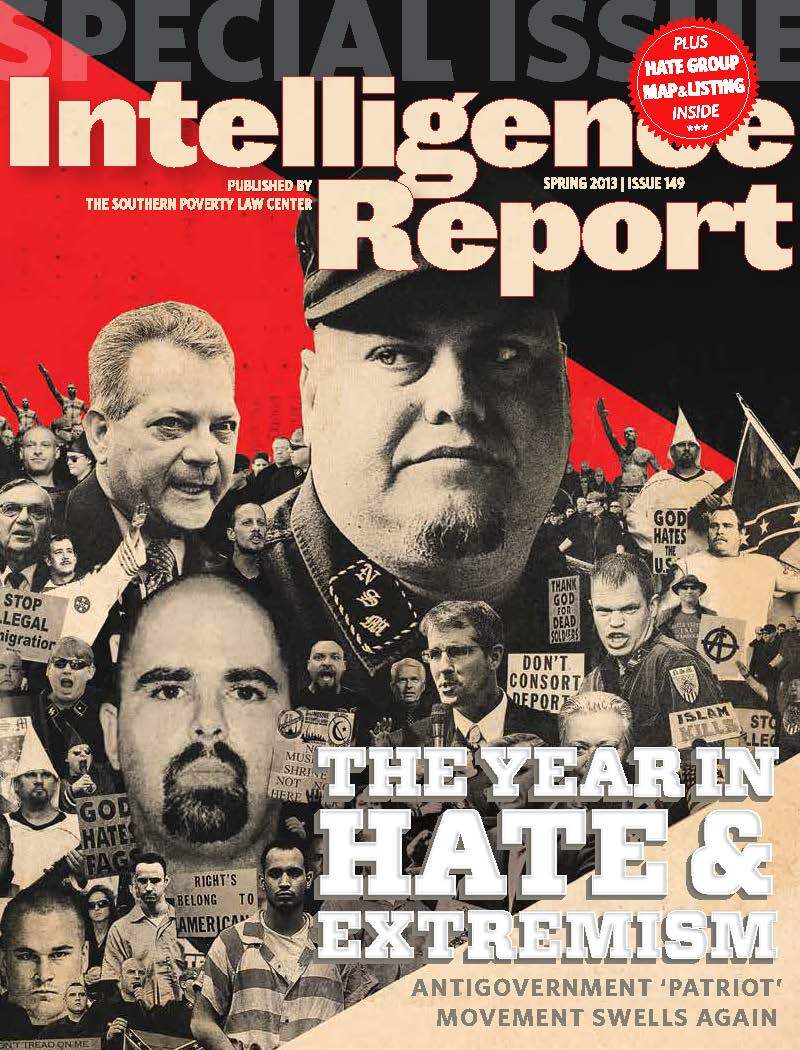It’s déjà vu all over again.
Twenty years ago, the passage of the Brady gun control bill helped ignite the first wave of the “Patriot” movement, a combustible mix of gun-toting militias and baseless conspiracy theories about government perfidy that culminated in the 1995 mass murder of 168 people in an Oklahoma City federal building.
As this year began, the first serious talk of gun control since the early 1990s, a reaction to the slaying of 26 people in a Connecticut elementary school, set off a comparable furor. Along with enraged howls from the radical right, even some more or less in the political mainstream, like ConservativeDaily.com’s Tony Adkins, took a page from the Patriot movement as they warned that “martial law” and “suspension of the U.S. constitution” could be coming at any moment.
Patriot leaders like Chuck Baldwin vowed to refuse to register or surrender their weapons, calling on other pastors to do likewise. The Oath Keepers, a Patriot group composed of present and former members of law enforcement and the military, said its people would never succumb to such “unconstitutional filth.” Other so-called Patriots warned furiously of secession, nullification, even civil war.
We live in frightening times.
Before the first wave of the Patriot movement died down at the end of the 1990s, law enforcement officials had broken up scores of terrorist plots aimed at the government and others. Now, after four years of a major Patriot resurgence, it seems likely that the movement and its violence will spurt ahead yet again, driven, as it was in the 1990s, in large part by hatred of gun control. The other powerful drivers of the movement have been the re-election of President Obama — who, like Bill Clinton in the early 1990s, is seen as a liberal traitor — and the sorry economy.
The movement’s resurgence since 2008, when there were just 149 Patriot organizations, has been dramatic. As we report in this issue, that number reached an astounding 1,360 groups in 2012, a rise of 813% in four years. At the same time, the number of hate groups remained above 1,000, as it has since 2010.
Patriot groups are now working overtime to stoke the political flames. Richard Mack was an iconic hero of the Patriot movement in the 1990s, when he was an Arizona sheriff who sued the Clinton administration and won a weakening of the Brady Bill’s background checks for gun buyers. Now, Mack is back as head of the Constitutional Sheriffs and Peace Officers Association, and he says that of 200 sheriffs he met with recently, most “have said they would lay down their lives first rather than allow any more federal control.”
Once again, the threat of violence seems to be looming. Already, to the surprise of some analysts, a major new study of domestic political violence from the radical right — “Challengers from the Sidelines: Understanding America’s Violent Far-Right,” by the director of the Combating Terrorism Center at West Point — found that right-wing violence is up dramatically from the 1990s. Specifically, the report found that there were an average of 70 “attacks or violent plots originating from individuals and groups who self-identify with the far-right of American politics” in the 1990s, but that the comparable number for the 2000-2011 period was 308, with especially high numbers from 2007 on.
Remarkably, the report also found that the far right was most likely to engage in violence “in a contentious political climate.” More precisely, it said that “the single most important factor is the number of Republicans in the House.” It’s unclear why that is, although it may be related to the encouraging rhetoric of some of those Republicans or perhaps frustration that they are not adequately representing extremists. What’s notable is that having right-wing representatives in Congress does not have the “safety valve” effect that many expected.
Eighteen years ago, the Southern Poverty Law Center wrote then-Attorney General Janet Reno to warn about extremists in the militia movement, saying that the “mixture of armed groups and those who hate” was “a recipe for disaster.” Just six months later, the Oklahoma City federal building was bombed. Today, with our country’s political polarization at historic levels and government officials being furiously demonized by Patriots, we may be approaching a comparable moment.
In the 1990s, warnings that might have averted some of the violence from the radical right failed to stick. Now, as we face another large and growing threat from the extremists of the Patriot movement, the country needs to do better. One important start would be to demand that the Department of Homeland Security, which gutted its non-Islamic domestic terrorism unit after unjustified criticism from the political right, rebuild its important intelligence capabilities.



